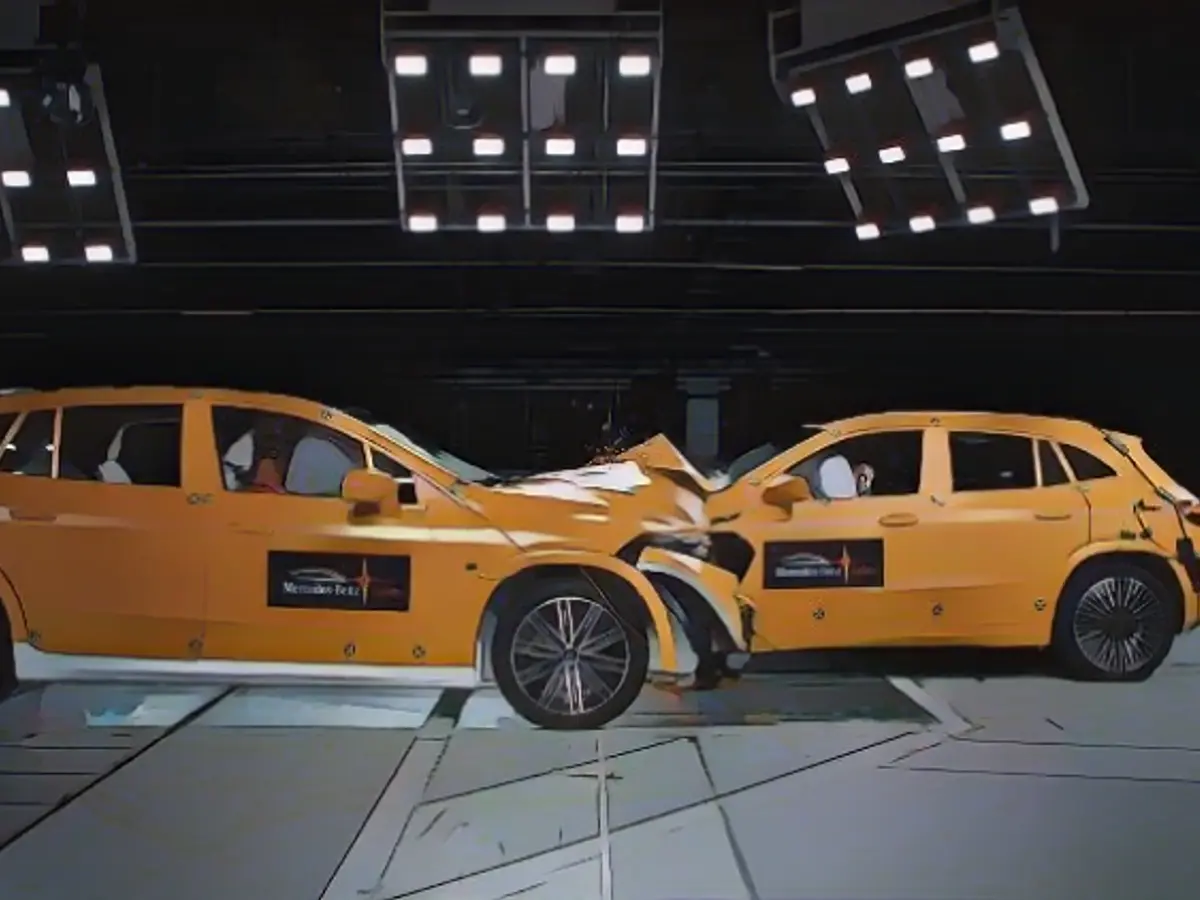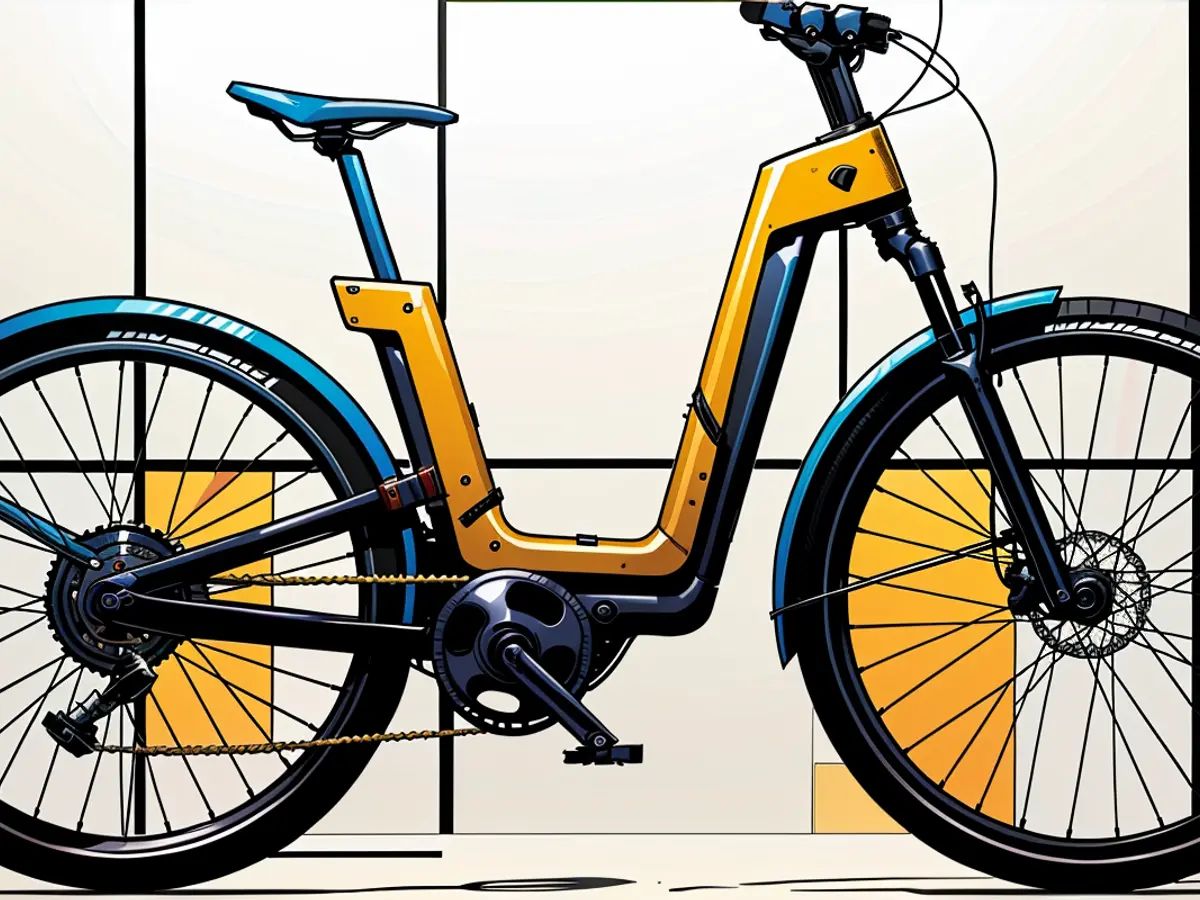How e-cars fare in the Mercedes crash test
Mercedes crashes two fully electric cars into each other at more than 50 km/h. The test shows why electric vehicles are just as safe as combustion engines.
The great Manitou watches over all crashes at the Mercedes Technology Center in Sindelfingen. However, the engineers are not relying on the power of an Indian god. Rather, it is a giant forklift truck from the brand of the same name. If a car were to burst into flames during a crash test, it would drag the wreckage out of the hall in a flash and sink it into a specially created pool of water.

So far, Manitou has never had to intervene. Not even during the crash test in October, which the safety engineers were particularly excited about. Mercedes was the first manufacturer in the world to have two fully electric cars crash into each other. At 56 km/h, an EQA and an EQS SUV crashed into each other head-on, slightly offset. Despite the massively crushed fronts, the structure of the passenger compartment remains intact.
Same crash safety requirements as combustion engines
Electric cars are still a small minority on the roads. But the more electric cars on the road, the greater the risk of two of them crashing into each other. "Electric cars naturally have to meet the same crash safety requirements as combustion engines," says Julia Hinners. The engineer is responsible for passive safety in vehicle development. "But because they are built differently, we have to adapt the bodies."

Hinners points to the floor of the two crashed electric SUVs. The area under the doors is only slightly deformed. Behind the sills is the battery, which requires special protection. If it were to catch fire, the fire would be very difficult to extinguish.
As a representative of all electric cars, Hinners uses a cutaway model of an EQS to explain what the protection concept at Mercedes looks like. Red, blue or purple areas mark the body parts of different hardness. Red stands for high-strength steel, entire sections of which can be found in the floor of the luxury liner: in the sill under the even harder B-pillars, for example, under the rear seat bench or in the front wheel arches. Almost like in a cage, the huge battery in the floor of the five-meter-long electric car is surrounded by solid supports.
Adapted to the peculiarities of electric cars

The engineers have also adapted the front bodywork to the characteristics of electric cars. Where otherwise a heavy combustion engine absorbs a large part of the impact energy, additional struts now have to maintain the crumple zone. An aluminum beam as thick as an arm, for example, which runs across the rear third of the engine compartment. In addition, the bodywork should be able to deflect the enormous forces released in a frontal collision past the passenger cell and battery as far as possible.
In the event of an accident, the power in an electric car must be switched off immediately, not only to protect the passengers, but also the emergency services. In conventional vehicles, the 12-volt electrical system uses the car body as the negative pole or ground. In an electric car with a voltage of up to 1000 volts, this would be fatal. Here, all high-voltage components are connected to each other with independent positive and negative cables. In the event of an accident, there is no short circuit as there is no closed circuit.
Power off

"We have developed a multi-stage high-voltage concept for our electric vehicles," says Hinners. "It comprises eight essential elements for the battery and electrical components with a voltage of more than 60 volts," explains the engineer. "As soon as the sensors detect a certain accident severity, the self-monitoring high-voltage system is switched off."
Relays open and the flow of electricity is stopped. In addition, the components connected to the battery are quickly discharged to such an extent that the voltage poses no danger. After a minor impact, the driver can then reactivate the power lines themselves. However, if an airbag is triggered, the disconnection is irreversible.
In any case, the crash involving the two electric cars happened just as Hinners and her colleagues had hoped. All the occupants survived the serious accident with only minor injuries, the battery remained intact and did not go up in flames. And the big Manitou did not have to intervene.
Read also:
Source: www.ntv.de








